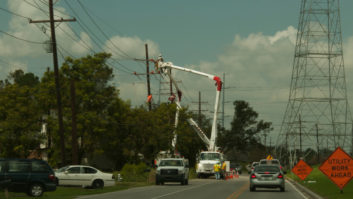With the continued growth of Pandora, SiriusXM, Spotify and other forms of digital entertainment, it might be easy to dismiss AM/FM radio as an outmoded form of mass media. But the coming of summer and another hurricane season gives a swift reality check to that notion. Radio is never more important than when a natural disaster occurs. It has the unique capacity to reach remote areas during times of catastrophe, and when it comes to providing vital information, radio remains a lifeline to the most vulnerable in times of crisis.
In Puerto Rico, which is a Nielsen radio diary market, the just-released winter 2018 survey reveals a rise in listening to news-formatted radio stations as a result of last year’s turbulent weather.
[Read: Nielsen Survey — Puerto Ricans Turn to Radio]
Nielsen recently released comments from the diaries of those who endured Hurricane Maria. A common thread among the respondents was the necessity of having radio during the storm.
“I am a loyal follower of AM stations because it keeps me up to date on Puerto Rico when Hurricane Maria hit. Many people listened to the radio, as it was the only means of knowing how family and friends were doing, and of keeping me company. So it is an excellent form of media, and I’ve been listening since I was a little girl.”
“Due to Hurricanes Irma and Maria, means of communication in Puerto Rico were damaged and the only stations (which we could still receive) were WKAQ and WAPA radio that provided a lot of information and I still listen to them today.”
“During our time of need due to Hurricanes Irma and Maria, radio was vital in providing information regarding the situation in Puerto Rico and in keeping us informed regarding our friends and family since we lost all communications, especially WKAQ and WAPA radio.”
“The radio stations that I have listened to during the last three months are due to Hurricane Maria. Before the hurricane I would only watch TV. I really like this change in my life and I’ve continued the habit.”
These stories reflect the human experience behind this catastrophe and radio’s vital role in providing information, news of loved ones and even companionship during a natural disaster. According to Nielsen’s most recent research, audio remains the top weekly reach medium, with 93% of U.S. adults listening to radio every week.












